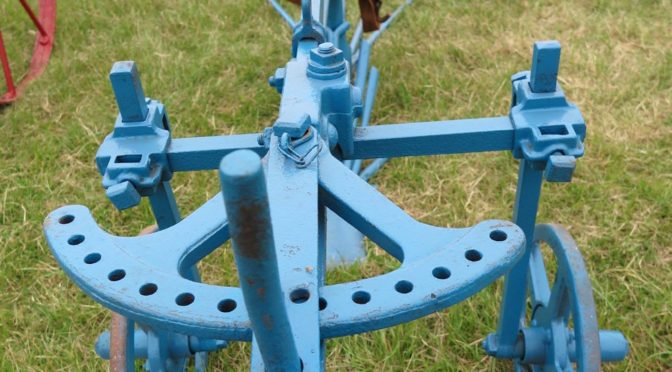One well known tradition that has been associated with Ayrshire during the late nineteenth and much of the twentieth centuries is the employment of Irish migratory potato workers, “Irish harvesters’, “tattie howkers” or “potato diggers”. Each year, they travelled from western and north-western districts of Ireland to harvest the potato crop in Lowland Scotland. They started their work in Ayrshire and other south-western counties, around mid June. In early August, they moved to later harvesting districts such as Dunbartonshire, Renfrewshire, the Lothians, Fife, Perthshire and Angus. They completed their harvesting work in late October or November. For the short period of time when they were employed in Ayrshire, these workers formed a visible and a distinct community. In 1929, one observer comments:
Every visitor to Girvan and other resorts to Ayrshire has seen the potato diggers at work in the fields, driving to the post office on Saturday night to send their hard won earnings to old folks in Achill. They rise to the echoes of early Sunday morning as they troop through the streets to Mass.
In 1910, this community comprised an estimated 1,500 to 2,000 workers. By 1971 it had declined to between 360 and 540 workers. A decade later this number was even smaller.
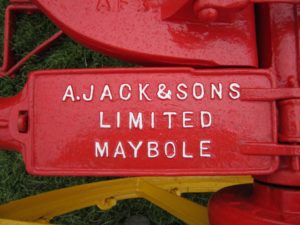
In Ayrshire, the employment of Irish potato workers was connected with the development of the early potato industry. By 1857, early potato growing was already well established and was “extensively practiced along the coast on the light and early soils”. As the area under this crop expanded and its reputation became renowned, it became synonymous with the county. In 1934 the North British Agriculturist could note that it “easily retains pride of place as containing the largest area devoted to the growth of earlies with a ratio of three actress to every one found elsewhere.” In 1938, some 5,724 acres of this crop were grown in the county (the corresponding area of maincrop, or later ripening crops, was 2,917 acres). In many other counties, relatively few earlies were grown, as much of the crop was later ripening varieties, or maincrops.
In some districts of Ayrshire, the early potato crop was an important one. Its main area of cultivation was along the coastal area, especially between Ayr and Ballantrae, and also in the lower Irvine and Garnock valleys. In Girvan, in 1901 it was considered to be “a most important” product. In that district in 1914, some 2,000 acres were grown. Until the 1930s, the crop from this district had a virtual monopoly in the Scottish early potato market. The Irvine and Garnock valleys could be “regarded as one of the two principal potato-growing districts of Scotland”. In these areas in 1932, the crop occupied “more than half of the total cropped land”. It was sometimes grown in the same fields year after year. For example, in 1913, the North British Agriculturist noted that a large field at Morriston had been under this crop for 38 years. By 1958, one field on this farm had been under this crop for some 70 years.
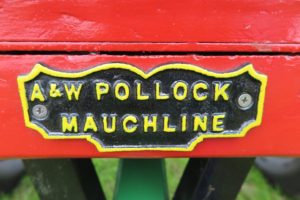
Central to the harvesting work and the recruitment of the Irish workers were the customary practices to grown, harvest and market the early potato crop. The intensive cultivation of large acreages of crop demanded that a number of contracts were developed between farmers on whose farms the crop was grown, and potato merchants who bought and disposed of the crop. One contract which was especially used in Ayrshire was sale by the acre: a farmer grew the crop and sold it when it was nearly ready to harvest at a price per acre, to a potato merchant, who harvested and disposed of it. This was an old agricultural practice. By 1857 it was already well established, being regarded as “the more general practice” for dealing with the early potato crop in Ayrshire. By 1883, a considerable breadth of the crop was sold in this way.
Many of the buyers who purchased the crops in this way were potato merchants who also employed the Irish workers. At the public sales in 1922 – crops could be sold privately or publically – they included at least 20 merchants from across central Lowland Scotland, especially western districts. Merchants from Glasgow formed a large percentage of the buyers, though small numbers were also from towns in Ayrshire, such as Girvan, Kilmarnock, Dalry, Ardrossan and West Kilbride. Some merchants purchased crops for a number of decades. They included well-established figures in the potato trade, the oldest and the largest firms in the trade and some of the largest employers of the workers: the Scottish Co-operative Wholesale Society, (reputed to be the largest buyer in Scotland in 1934) Galbraith’s Stores, J and A MacArthur, James Fulton Junior and Paul and Weir. In 1934, for example, J and A McArthur “generally” employed about “200 workers in lifting early potatoes” and the Scottish Co-operative Wholesale Society about 300 workers.
At the public sales, the crops on two or more farms were usually sold together. They were sold in lots which ranged from one to ten acres in extent, with many being between three and five acres. On each farm, it was usual for the different lots to be sold to a number of merchants. At harvesting time, the work on each farm was undertaken by a number of squads employed by different potato merchants. On some farms, large numbers of workers were employed. In 1920, three or four squads were employed at Girvan Mains (a squad usually had between 20 and 30 workers). At Doughill, this figure was around 100 workers. One account from 1909 suggests that some 200 men and women were employed at one farm for 6 or 7 weeks. This figure is also recorded on some farms in 1921. Squads undertook their harvesting activities for a short period, from a few days to a few weeks. They were therefore employed on a number of farms before they moved to another harvesting district to continue their work.
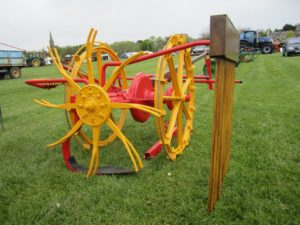
By the early twentieth century, the Irish workers were the principal source of labour for the potato merchants. In 1903, one observer remarked that “formerly the merchants got hands from Glasgow and still get a few from there, but for many years, the bulk of the workers have gone from the west of Ireland.” So important were their services that in 1905 the Department of Agriculture and Technical Instruction for Ireland could assert that “Irish labour is at present indispensable to the early potato harvest”. At around this date, the Ayr Advertiser recognised that “without their assistance, there would be some trouble in finding sufficient hands.” They were highly regarded for their skills and the quality and output of their work. In 1907 the Ayr Advertiser observed that “as a rule, they are capital workers and well behaved.” Merchants and farmers who compared the Irish and Scottish workers “agree[d] that the Irish have been found the steadier and more satisfactory workers.” Some years later, one merchant suggested that “the merchants generally were well pleased with the hard working Irish picker who in many cases worked for two or three generations on the same farms for the same merchant.”
Who were the Irish workers and how were they recruited?
The workers were recruited as self-contained harvesting units, or squads, capable of harvesting the early potato crop (and later ripening crops) as quickly, efficiently and effectively as possible. As noted, each one generally comprised between 20 and 30 workers. However, they could also be larger or smaller, especially in Ayrshire where the largest squads were reported to be found. In 1907, one report suggests that in this county “the size of the gangs varied very much from 6 to 60 or 70 men and from 12 to 140 or 150 women in some of the farms.” These figures suggest that a number of squads were employed at one farm at the same time. Other squads had between 15 and 40 workers in each.
The squads were recruited by Irish gaffers or gangers, employees of Scottish potato merchants who were their local agents in Ireland. They were males who had participated in the potato work for a number of seasons and were experienced in its practices. In some districts their employment was hereditary and the position was passed from father to son. Some families of gaffers were also associated with particular potato merchants.
The gaffers had a number of functions. Each was responsible for a squad: they recruited and brought together its members, arranged their transport to Scotland, kept them together and supervised them throughout the harvesting season. In addition, they also looked after their welfare. They played a pivotal role between the potato merchant and the farmer on whose farm the crop was to be harvested: they paid the members of their squad their wages and ensured that they received their perquisites from the farmer or the potato merchant such as their housing, coals, potatoes for eating, and cooking utensils.
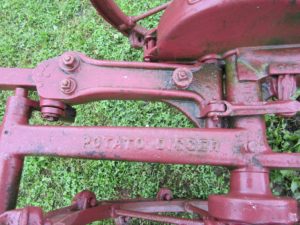
The gaffers recruited their squads from a small area of the west and north-west of Ireland. In 1905, this was the counties of Mayo and Donegal, an area where the majority of Irish seasonal agricultural workers employed in Britain, were recruited. By 1937, some 70% of the potato workers were recruited from the first of these counties, and a further 25% from Donegal; the remaining few were drawn from Galway. In each county, workers were drawn from specific districts. In Mayo in 1937, the main recruiting districts were the western parts of the county: the Belmullet and Wesport rural districts which included Achill Island, the single most important area.
The gaffers usually recruited their squads from their home districts in these counties. As they were well-known figures, people who wanted work approached them to get a place on their squad. They also undertook formal recruiting at fair days such as those of Bangor (11 June) or Belmullet (15 June). They also travelled around their home districts, prospecting for further workers.
The squads had a distinct character. Many comprised relatives and neighbours. In 1910, the County Medical Officer of Ayrshire, Dr Coll Reginald Macdonald, observed that “a gang may be composed to a large extent of relatives and personal friends.” However, they very seldom included married couples. The workers were largely sons and daughters of smallholders who were accustomed to agricultural work. Their members also had a distinct age pattern. They were largely teenagers and young adults. In 1938, one observer remarked that “the most noticeable feature about the travellers was their youth”. By 1964, an estimated 60% to 70% of the workers employed in Ayrshire were under 20 years age. It was not uncommon for them to start work at the age of 14 or 16 years, when they were considered to be strong enough to undertake it. Each sex of worker also had a distinct age structure. Females tended to participate until they married. In 1905, males were from 16 to 21 years of age or old men. This reflected the role which the potato harvest had in their lives. As teenagers, it provided them with their first experience of migratory work. When they became older and stronger, they undertook other types of migratory work (which also paid a higher wage rate). A number returned to the potato work with their young families to introduce them to it. Others engaged in it when they were unable to undertake other types of migratory work.
The squads also had a distinct ratio of male and female members. As the work was considered to be easier to undertake than other types of seasonal migratory work, a higher percentage of females than males engaged in it. In 1907 this figure ranged between 60% and 70%. By 1937, the members of squads were described as being “a few male adults, the remainder being women, boys and girls.”
After the Second World War, the character of the workers changed. This started to be noted in the late 1940s, and became especially evident during the 1950s and 1960s. This change can be attributed to a number of factors. One was changing recruitment methods and patterns. By the early 1960s, gaffers were finding that they could not recruit sufficient numbers of workers from the traditional recruiting districts. They started to draw them from a number of localities and from a range of social and occupational groups: a first group continued to be relatives of small holders from the traditional recruiting districts; a second one were drawn from housing estates in towns in Mayo and Donegal (these workers were not always acquainted with agricultural work); a third one was members of the tinker class; and a fourth one was workers hired from hostels and recruitment agencies in the towns and cities outwith the west of Ireland.
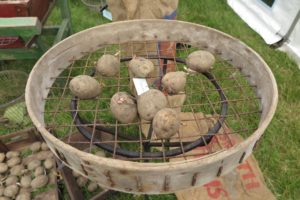
As workers were drawn from a range of backgrounds and localities, the relationship between squad members altered. Although family groups continued to be noted amongst squads in 1964, workers were not always accompanied by one of their parents (i.e. they comprised brothers and sisters or other family relations). By 1971, there had been a further increase in the number of workers who did not have any family ties, and therefore the number of workers who were unknown to one another before they started their harvesting work. The age of the workers also changed. There was an increase in the number of children. In 1952, they were described as “young children, much too juvenile to be workers” and as the “holiday-making friends and relatives of the diggers.” So great was their impact on the character of the squads that in 1962, the Carrick District Sanitary Inspector commented that “it has been said that the tattie howkers sitting on the trailers on their way to the fields looked more like a Sunday School picnic than a working squad.” There was also a change in the ratios of male and female workers. By 1964, there was a marked increase in the number of males employed in Ayrshire. On 21 farms there was a greater number of males than females. At a further five farms there were equal numbers of both.
As a result of these changes, the social and moral safeguards that had been provided by the strong family and neighbourhood ties were weakened. Among some squads, a number of moral and social problems emerged. In Ayrshire, Wigtownshire, East Lothian and West Lothian, sanitary inspectors considered that the presence of young children and infants was “undesirable and continues to give rise to concern.” Their presence caused the workers’ accommodation to become overcrowded, and, as a result, its standard – which was often the subject of much criticism during the twentieth century – became poorer. Children who were too young to be employed, had to be supervised during work hours, and they could not always be properly looked after. There was an increase in anti-social behaviour. For example, the increased numbers of tinkers kept themselves apart from other squad members, and created divisions within them. They were also associated with the destruction of domestic facilities, especially water closets. As one observer commented in 1962: “the tinkers are blamed for the pretty terrible way even good facilities are messed up.”
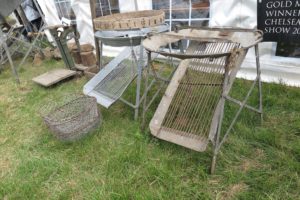
The Irish workers undertook a number of tasks in harvesting the early potato crop. These were determined by the contracts between farmers and potato merchants to grown, harvest and market the crop. The Irish workers (the employees of the potato merchants) formed the core of the harvesting labour force. Most of their tasks were undertaken by a specific sex of worker, though some could be carried out by both sexes. These were determined by the physical strength required to undertake them. Women were generally given the less physically demanding tasks such as gathering the potatoes from the ground into baskets. Males had a range of tasks such as emptying baskets of potatoes gathered by the gatherers, or loading potatoes onto carts or lorries that were to be taken to market. They also worked with the graip (a three or four pronged fork whose prongs were flattened at the ends) for gathering potatoes from the ground, though this could also be undertaken by women. The remaining tasks were undertaken by Scottish farm servants, employed on the farms on which the crops were to be harvested. They transported the potatoes from the harvest field; worked at the potato pits if the crop was to be saved for seed; drove the digger or other harvesting implement where the crop was to be harvested by this means.
The early potato crop was harvested using a range of tools and techniques. Many of these were used over long periods during the period of this survey. Central to the harvesting work was the hand tool or implement used to dig the potatoes out of the drills in which they grew or uncover them. Even until well into the twentieth century, the graip, played an important role in the harvesting field. At West Kilbride in 1951, the crop was harvested “mostly by hand”. Further accounts suggest that the crop continued to be dug in this way until at least the late 1950s. The graip was a specialised tool which was very labour intensive and therefore expensive to use. By the early twentieth century, it was not widely used, and was largely confined to harvesting the early potato crop where the price of the potatoes was high enough to recover harvesting costs. But it was also well suited to harvesting this crop: it could easily deal with the shaws or haulm of the crop which was still vigorous when the crop was dug and if it was effectively used, it would not damage the immature tubers when they were being harvested. Such tasks could not be achieved by some of the earliest mechanical diggers.
A number of implements were also employed to dig the crop. The potato plough, a plough without a coulter, which was extensively used in the late eighteenth century, continued to be utilized to harvest early potatoes as late as 1968. The spinner, the first mechanical implement with moving parts, was quickly adopted throughout potato growing districts in Scotland from the 1890s onwards. By 1918, it was being adopted in Ayrshire in increasing numbers. It had the effect of reducing the need to employ experienced potato workers. In 1968 it was the most widely used implement in the county. This was followed by a newer implement, the elevator digger, which comprised a moving elevator which sifted and separated the potatoes from the soil in the drill in which it had grown.
The use of tools and implements affected the work and organisation of the Irish workers. When the crop was harvested by the graip, the workers started their digging and gathering activities at one end of the field and moved up the length of the drill to the other end. Their work was organised so that it could take place systematically and at a steady speed. The workers were regulated by the use of the foregraip or first digger, a male or female worker, who set the pace for the other workers. They were arranged in “graips” or pairs, a digger and a gatherer: the gatherer faced the digger and moved backwards on their knees, facing towards them as they uncovered the potatoes from the drill.
This method of arranging the gatherers was not used when crops were harvested with a mechanical implement. Instead, the drills of potatoes were marked into sections of equal length, called stents, which were indicated by sticks or branches, which identified where each gatherer’s work started and finished. Their length varied according to the length of the drill, the number of gatherers employed and allocated to each one (usually one or two). Shorter stents were preferred as workers gathered for a short period of time and had frequent rests.
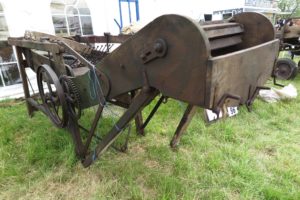
After the potatoes were dug out of the ground they were collected by the gatherers, into a range of containers. As they gathered them, they could also grade or sort them into a number of different sizes or separate the sound from the unsound ones. Mechanical potato graders or sorters were developed and used from the 1890s to undertake this work. Electric grading or sorting machines were introduced in Ayrshire in 1961. These made the need to manually separate potatoes redundant.
During the early twentieth century, the workers gathered the potatoes into spail baskets made of thin strips or spails of wood. These were superseded by ones made of wire mesh and by the 1970s, others made of plastic. As much of the crop was sent directly from the fields to its place of sale, the potatoes were weighed or measured. This could be undertaken in a number of ways: the baskets of potatoes could be emptied into another container which was used to weigh or measure the potatoes, such as a barrel; they could be put into a hessian or jute sack which weighted 112 lbs, or, in later years, paper bags which held 56lbs. Before 1950, barrels were usually used to take the potatoes to market. So widespread were they that they were associated with the early potato crop and provided an excellent way of preventing the potatoes from rubbing and damaging their skins during transit.
Accounts of the early potato harvest which have been left by the Irish workers suggest that the work was physically demanding. Patrick MacGill described at length this work at Rothesay in 1905. He considered that the gathering of the crop was ‘the devil’s job’ and described it in terms of physical hardship: ‘the job, bad enough for men, was killing for women.’ Other reports noted that the workers found that the job was monotonous. One worker suggests that ‘the machines came in, the diggers, and all you had to do was gather after the digger and that was day after day, that was your work. There was nothing else.’
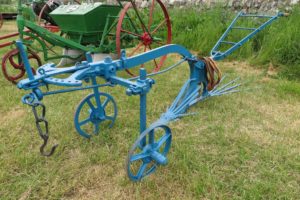
Although the potato crop in Ayrshire was harvested by a large labour force throughout much of the period of this survey, the complete harvester which could harvest the potato crop, separate the potatoes from the soil, and deliver the potatoes into a box or bags without the need to employ squads, eventually made this need redundant. By the early 1960s, a number of these harvesters were employed on farms. In 1963, Chapelhill Farm, which customarily employed Irish workers, experimented with one. However, it was only used for two years, and squad labour was again employed. It was not until 1966 that the advent of machine harvesting took place in Ayrshire. In this year, six or eight machines were reported to be at work in the Girvan area. Two years later, the Potato Marketing Board found that few harvesters were used in this area. It noted that the harvester was “hardly used’ in south-west Scotland and only dealt with 3% of the crop. This compared to some 40% of the acreage throughout Britain. The corresponding figure for south-west England was 57%; for the Lothians, it was 69%. This pattern highlights that in Ayrshire the crop continued to be harvested with more traditional implements. A number of factors contributed to this: mechanical harvesting had a lower output than harvesting with a squad, and it was therefore more difficult to harvest the large acreages of crop. Furthermore, Irish (and also local workers – who were starting to be employed in greater numbers by this time) continued to be available in sufficient numbers. In other areas they were more difficult to obtain and the labour supply was also more uncertain.
The photos include nameplates of businesses well known for potato spinners and machines for dressing potatoes.
